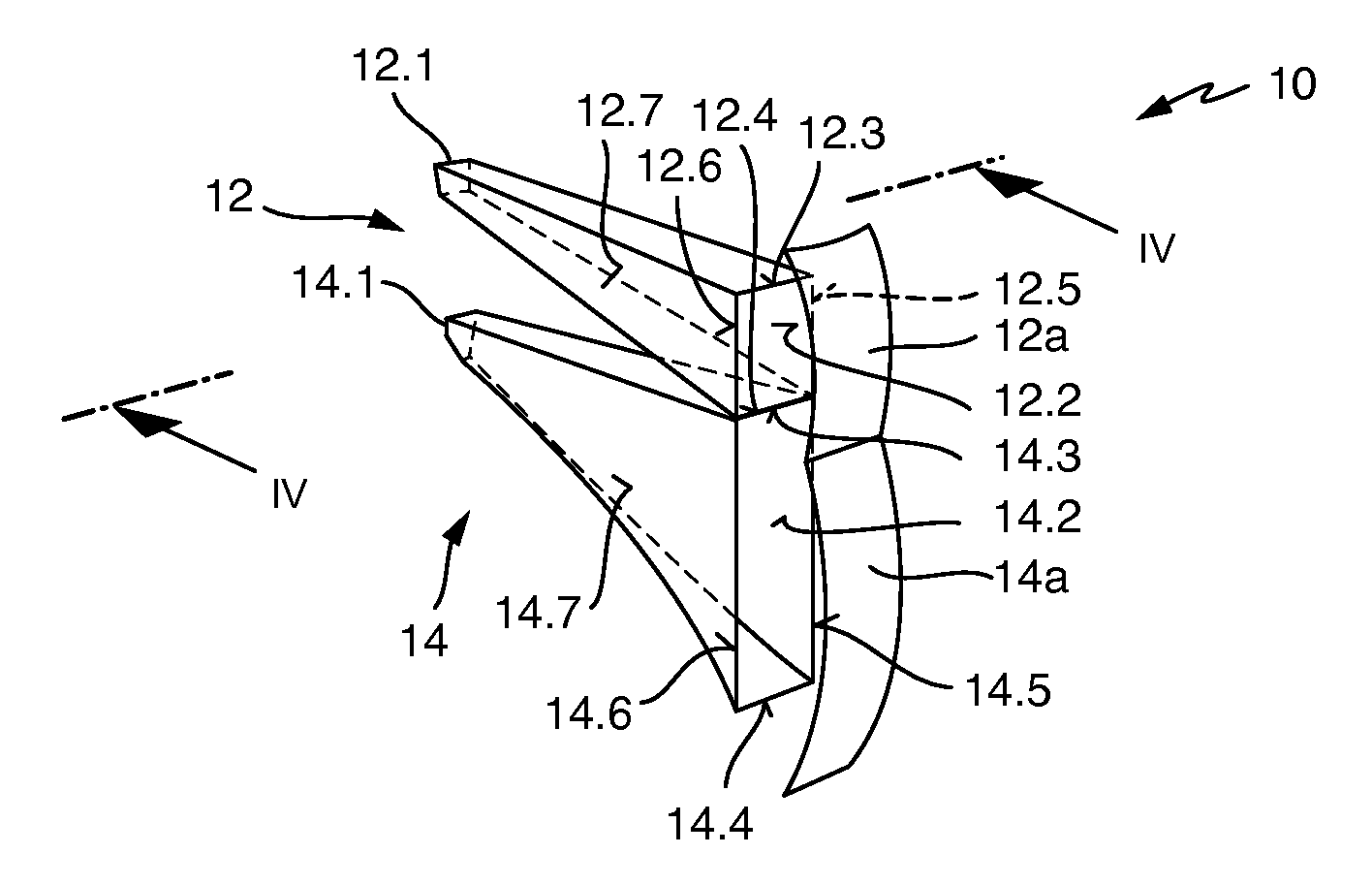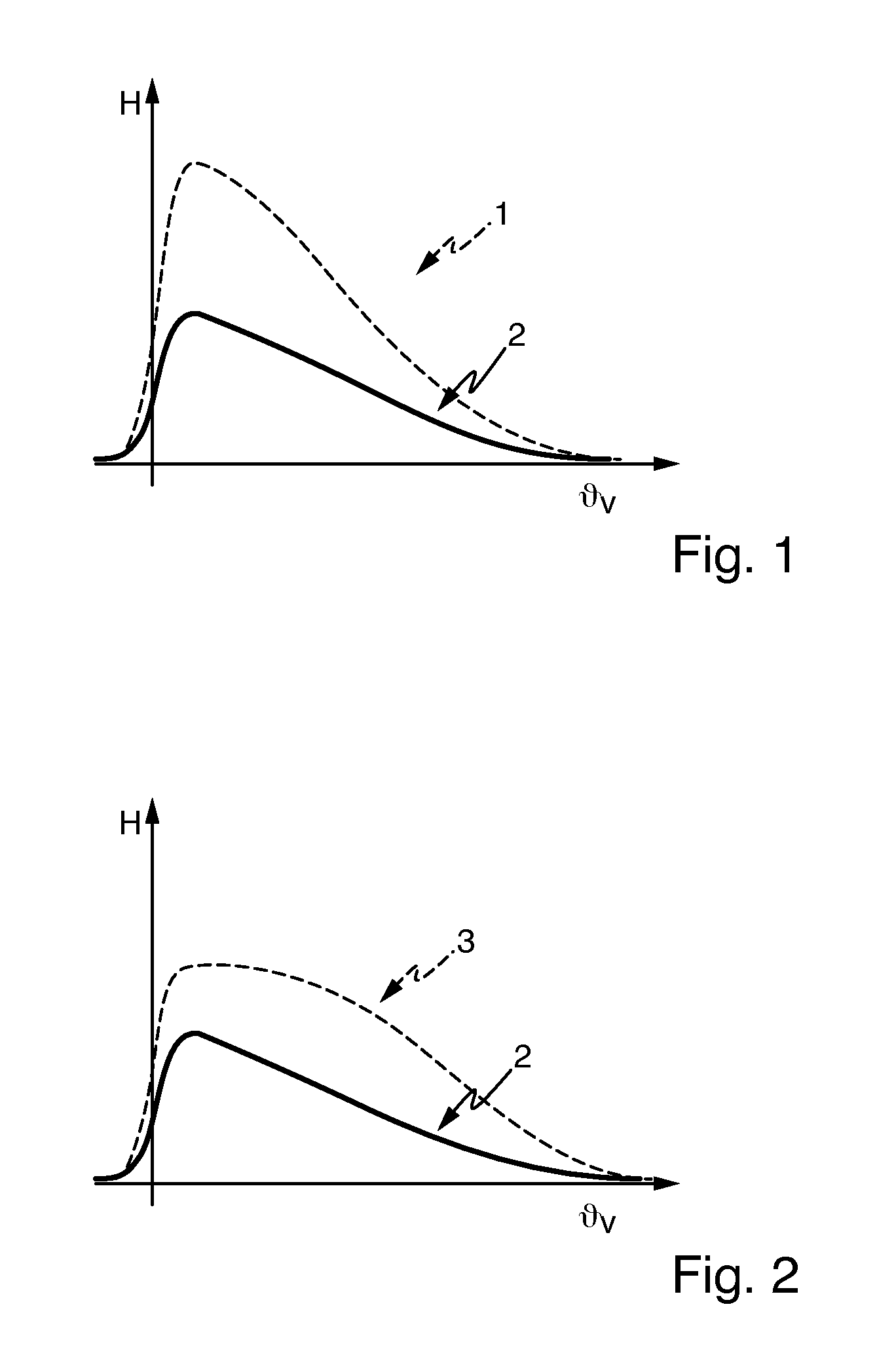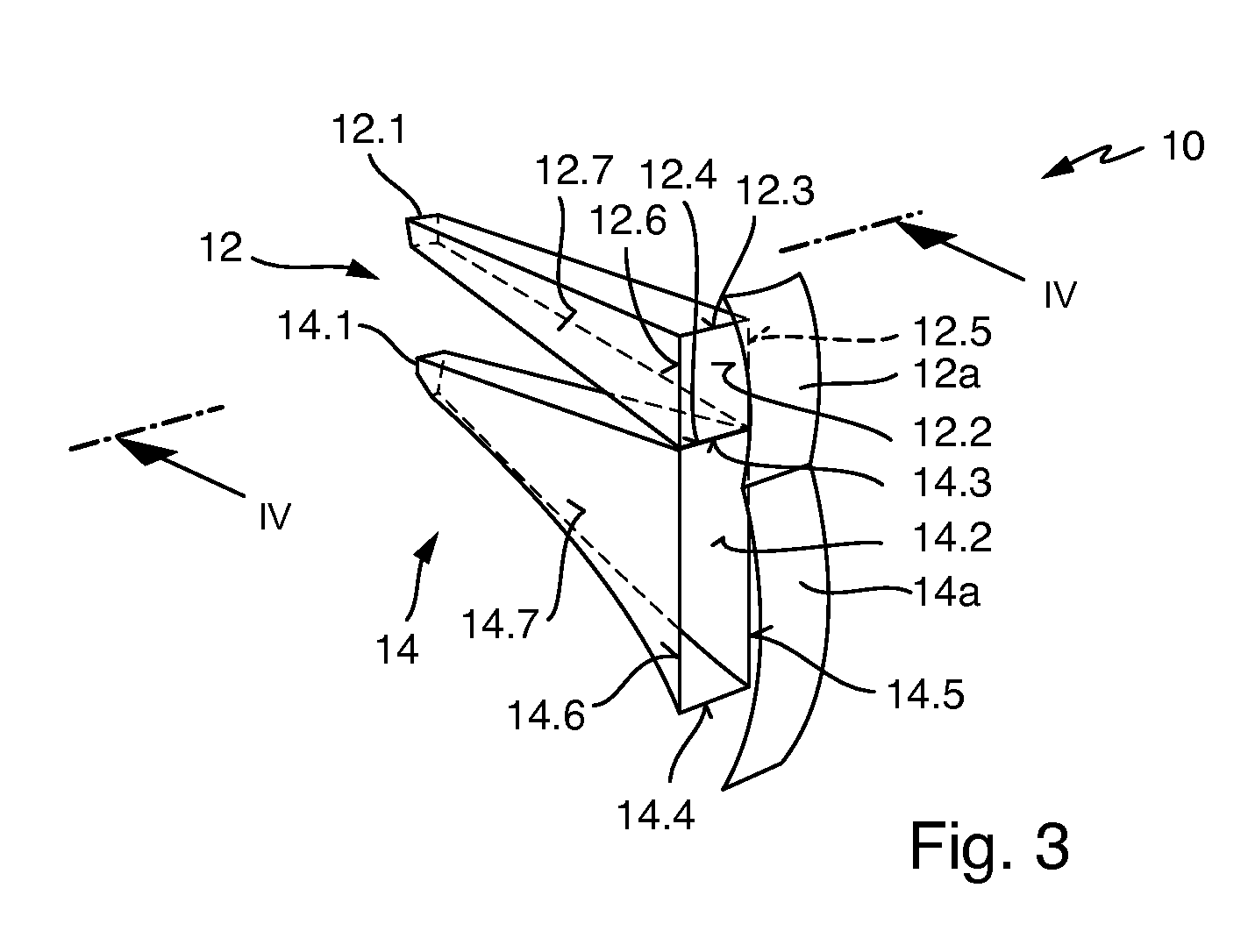Light module for a motor vehicle headlamp, configured to generate a stripe-shaped light distribution
a technology for motor vehicles and light modules, which is applied in vehicle headlamps, fixed installations, lighting apparatus, etc., can solve the problems of limiting the variability of the lens system and obtaining limitation, and achieve high efficiency and high efficiency
- Summary
- Abstract
- Description
- Claims
- Application Information
AI Technical Summary
Benefits of technology
Problems solved by technology
Method used
Image
Examples
Embodiment Construction
)
[0038]Elements that are the same, as well as those corresponding functionally to one another, are indicated by the same reference symbols throughout the figures. The curve indicated by a broken line in FIG. 1 represents a desired luminosity profile 1 of a stripe-shaped light distribution over the angle ΘV, as it is occurs in the region in front of the light module on a measurement screen disposed perpendicular to the main emission direction of the light module. This angle indicates an angular deviation in the vertical plane of a motor vehicle longitudinal axis with the designated use of the light module in a motor vehicle headlamp in a motor vehicle, which is located at the level of the horizon in front of the vehicle. The value ΘV=0 thus corresponds to the level of the horizon. In one embodiment, the desired light distribution of profile 1 exhibits practically no luminosity below the horizon, followed by a steep increase to a large maximum value (which occurs slightly above the ho...
PUM
 Login to View More
Login to View More Abstract
Description
Claims
Application Information
 Login to View More
Login to View More - R&D
- Intellectual Property
- Life Sciences
- Materials
- Tech Scout
- Unparalleled Data Quality
- Higher Quality Content
- 60% Fewer Hallucinations
Browse by: Latest US Patents, China's latest patents, Technical Efficacy Thesaurus, Application Domain, Technology Topic, Popular Technical Reports.
© 2025 PatSnap. All rights reserved.Legal|Privacy policy|Modern Slavery Act Transparency Statement|Sitemap|About US| Contact US: help@patsnap.com



